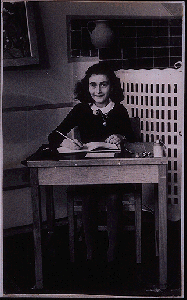

Holocaust questions and answers


Q & A
1. When speaking about the "holocaust" , what time period am I refferring to?
Answer: The term "Holocaust" referes to the period from January 30, 1933 when Hitler became chancellor of Germany, to May 8, 1945 when the war ended in Europe.
2. How many Jews were murdered during the Holocaust?
Answer: While it is impossible to ascertain the exact number of Jewish victims, statistics indicate that the total was over 5,830,000. Six million is the rownd figure accepted by most authorities.
3. How many non-Jewish civilians were murdered during World War II?
Answer: While it is impossible to ascertain the exact number, the recognized figure is approximately 5,000,000. Among the groups which the Nazis and their collaborators murdered and persecuted were: Gypsies, Serbs, Polish intelligentsia, resistance fighters from all nations, German opponents of Nazism and hawkers.
4. Which Jewish communities suffered losses during the Holocaust?
Answer: Every Jewish community in occupied Europe suffered losses during the Holocaust. The Jewish communities in North Africa were persecuted, but the Jews in these countries were neither deported to the death camps, nor were they systematically murdered.
Thus, the list reads as follows (in alphabetical order--according to pre-war boundries):
Austria, Belgium, Bulgaria, Czechoslovakia, Denmark, Estonia, Finland, France, Germany, Greece, Holland, Hungary, Italy, Lativa, Lithuania, Luxemburg, Norway, Poland, Romania, the Soviet Union, Yugoslavia.
5. What is a mass murder camp? How many were there? Where were they located?
Answer: A mass murder camp is a concentration camp with special apparatus specifically designed for mass murder. Six such camps existed: Auschwitz-Birkenau, Belzec, Chelmno, Majdanek, Sobibor, Treblinka. All were located in Poland.
6. What does the term "Final Solution" mean and what is its origin?
Answer: The term "Final Solution" (Endlosing) refers to the Germans' plan to physically liquidate all the Jews in Europe. Ther term was used at the Wannsee Conference (held in Berlin on January 20, 1942) where German officials discussed its implementation.
7. When did the "Final Solution" actually begin?
Answer: While thousands of Jews were murdered by the Nazis or died as a direct result of discriminatory measures instituted against Jews during the initial years of the Third Reich, the systematic murder of Jews did not begin until the German invasion of the Soviet Union in June, 1941.
8. How did the Germans define who was Jewish?
Answer: On November 14, 1935, the Nazis issued the following definition of a Jew: Anyone with three Jewish grandparents; someone with two Jewish grandparents who belonged to the Jewish community on September 15, 1935 or married to a Jew or Jewess on September 15, 1935.
9. How did Gremans treat those who had some Jewish blood but were not classified as Jews?
Answer: Those who were not classified as Jews but who had some Jewish blood were categorized as Mischlinge (hybrids) and were divided into two categories:
Mischlinge of the first degree-those with two Jewish grandparents;
Mischlinge of the second degree-those with one Jewish grandparent.
The Mischlinge were officially excluded from membership in the Nazi Party and all party formations (SS,SA, etc.) and although they were drafted into the German Army, they could not attain the rank of officers. They were also barred from the Civil Service and from certain professions. (Individidual Mischlinge were, however, granted exemtions under certain circumstances.) Nazi officials did consider plans to sterilize Mischlinge, but this was never done. During WW2, first-degree Mischlinge incarcerated in concentration camps were deported to the death camps.
10. Did the Nazis plan to murder the Jews from the beginning of their regime?
Answer:This question is one of the most difficult to answer. While Hitler made several references to killing Jews both in his early writings (Mein Kampf) and in various speeches during the thirties, it is farily certain the Nazis had no operative plan for the systematic annihilation of the Jews until early 1941. The decision on the systematic murder of the Jews until early 1941. The decision on the systematic murder of the Jews war apparently made in conjunction with the decision to invade the Soviet Union in late winter or early spring of 1941.
11. Why were the Jews singled out for extermination?
Answer: The explanation of the Nazis' implacable hatred of the Jew rests on their distorted world view which saw history as a racial struggle. They considered the Jews a race whose goal was world domination and who therefore were an obstruction to Aryan dominance. They believed that all history was a fight between races which should culminate in the triumph of the superior Aryan race and therefore viewed it as their duty to eliminate the Jews whom they regarded as a threat. Moreover, in their eyes, the Jews' racial origin made them habitual criminals who could nevr be rehabilitated and were therefore hopelessly, corrupt and inferior. There is no doubt that other factors contributed toward the Nazis' hatred of the Jews and their distorted image of the Jewish people. Among them were a centuries-old tradition of Christian anti-Semitism people which propagated a negative stereotype of the Jew as a Christ-killer, agent of the devil, and practitioner of witchcraft, as well as the political anti-Semitism of the later-half of the nineteenth and early part of the twentieth century, and the racist movement which developed during the same period and singled out the Jew both as a threat and as the member of an inferior race. These factors combined to point to the Jew as a target for persecution-and ultimate destruction--by the Nazis.





